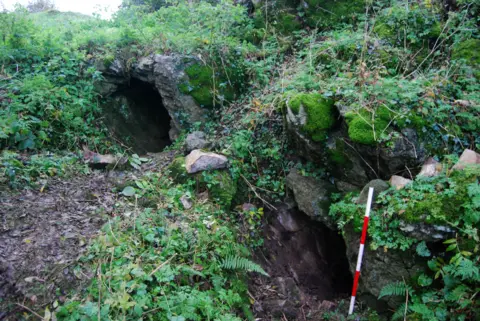Scientists have found an “unprecedented quantity” of bacteria that cause tooth decay and gum disease in 4,000-year-old human teeth.
The dental remains, believed to have belonged from a man from the Bronze Age, were unearthed from a limestone cave in County Limerick in the Republic of Ireland.
Researchers from Trinity College Dublinsaid the conditions of the cave at Killuragh – which is cool, dry, and alkaline – may have helped in the “exceptional preservation” of bacteria.
The “remarkably rare” find helps shed insight into how the human diet evolved across centuries, particularly in relation to sugar consumption.
 PAResearchers believe the conditions of a limestone cave in County Limerick may have helped preserve the remains
PAResearchers believe the conditions of a limestone cave in County Limerick may have helped preserve the remains
The dental samples contained DNA of streptococcus mutans – a type of bacteria responsible for cavities.
The team also found other types of microbes associated with gum disease, including Tannerella forsythia.
Based on their analysis, the scientists were able to reconstruct the genomes of the ancient bacteria.
They said it is “exceptionally rare” to find S. mutans in ancient tooth samples as this bacteria produces acids that cause tooth decay but also degrades DNA.
Read Also: South Africa orders ‘dysfunctional’ colleges to close
Lara Cassidy, an assistant professor at Trinity College Dublin, told PA news: “We were very surprised to see such a large abundance of mutans in this 4,000-year-old tooth.
“It is a remarkably rare find and suggests this man was at high risk of developing cavities right before his death.”
However, the researchers believe that the “high abundance” of S. mutans DNA in the root of one tooth could also potentially indicate an imbalance or disruption in the microbial community in the mouth.
The team said that archaeologists have observed an uptick in dental cavities in skeletal remains when humans began to adopt cereal agriculture, but tooth decay become much more common in the Early Modern period, beginning about 1500 AD.
SOURCE: BBCNEWS



























